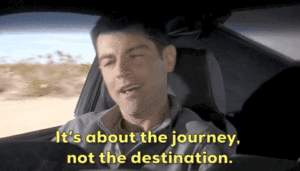It wouldn’t be overkill to say that the pandemic changed us inside out. With this new halo over our heads, we’re rethinking everything – from lifestyle and career choices to food and travel. Hustle culture has taken a backseat, toxic productivity is cancelled, and mindfulness is the new hoot.
This *take it slow* attitude has revolutionized everything – including travel. Traditional vacation ideas are crammed with adventures and sightseeing in 2 nights and 3 days. After all, we’re paying for this vacation; gotta get our money’s worth, right? No kidding, one often feels like taking a vacation to get over this vacation. And all this for what? We’re showing off our 5-star holiday resorts and beach outfits on Instagram but can’t recall one experience that truly moved us. Travel is not invalid if it comes with no moral awakening, but the racing through tourist hotspots leaves little time for simply “being”.
“As a slow traveller, you typically stay
in a place for a longer stretch of time and forge meaningful relationships
with the local people, culture and cuisines.
It is less manic sightseeing and more soaking in your surroundings at a relaxed pace.”
What if travel could be a spoonful of adventure, a *tinge* of doing nothing, and lots of immersive experiences? Slow travel is one such fresh perspective to vacationing. It is intentional, immersive, and experience-oriented. It began as an offshoot of the Slow Movement, addressing the issue of “time poverty” by making connections. As a slow traveller, you typically stay in a place for a longer stretch of time and forge meaningful relationships with the local people, culture and cuisines. It is less manic sightseeing and more soaking in your surroundings at a relaxed pace.
Slow travel has become a top pick post-pandemic because a whopping majority have used their newfound privilege of working from anywhere by packing in a bunch of trips amongst their usual meetings and conferences.
We talked to one such solo-slow traveller – Reshma Narasing, founder of Solo Globetrotter – about her slow travels across 30+ countries. She began slow travelling before it was a thing. Reshma says, “I first slow-travelled by trekking up a hill near my hometown. We think we know everything about our place and culture, but a lot is unexplored.” When asked to recommend how one should decide where to slow travel to, she suggests, “Go someplace nearby. It isn’t a huge commitment. You can always trot back if it doesn’t work out.”

As a slow traveller, you ditch the fancy hotels and choose holiday rentals, i.e. houses, cottages, apartments, or villas. These places are equipped for you to move in and start “living”. In fact, even some travellers’ hostels have started setting up such that they could accommodate long-staying guests. Reshma left us with this parting suggestion- “Stay in the downtown area in the first few days. This is where all the action happens. You familiarise yourself with the culture and language before you begin to explore.”
Once you narrow down your slow-travel destination, scour the internet for its culture, history, language and the conventional “famous” places. Slow-travellers are not nutty about itineraries or guides, but they do their research about the place to know what all lies ahead. On arriving at your pre-booked rental, make yourself comfortable in your new *home*. Reshma shares, “The first thing I do is get the wifi password. I’m always picky about my work desk having to overlook the window. So, I do a lot of rearranging and customise the room to suit my taste.”
“Since you stay at a place for a week or longer and plan to do this often,
eating out isn’t budget-friendly. Slow travellers choose to cook in their rental kitchen and
even experiment with local spices and vegetables.”
Since you stay at a place for a week or longer and plan to do this often, eating out isn’t budget-friendly. Slow travellers choose to cook in their rental kitchen and even experiment with local spices and vegetables. You might bump into the same locals while shopping for these at the grocery store, and who knows if they take you places that are not on any tourist map, and you try the food at a restaurant Google never bothered to list?
To explore a place as a slow traveller is more than posing for the gram in front of famous monuments and ticking off artsy cafes. Reshma suggests, “I love signing up for walking and hiking tours. They usually last for a few hours or even a day. I always meet people from diverse backgrounds on these tours and cherish these connections.” City museums are another treasure trove for all art-nerds slow-travellers. Workshops by local artisans like ceramists, sculptors, goldsmiths and art restorers allow you to go behind the scenes and learn trade secrets from the masters themselves.
Slow-travellers aren’t always *exploring*; on some days, they let their hair down and do nothing, while on some, they squeeze in more work and less adventure to fund their travel dreams. Reshma leaves us with insightful comments on why she loves slow travel – “Foremost, it allows me to mingle with people from all strata of the society. This broadens my horizons. I learn of so many eclectic professions every time I stay at an Airbnb or rental, and it gives me hope and courage to branch out and do more. Also, I always wanted to live, slow travel perfectly fit the bill.”


